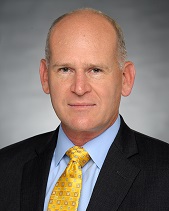CMS has indicated that the States Advancing All-Payer Health Equity Approaches and Development (AHEAD) model is moving forward, and the pre-implementation period is well underway in awarded states Maryland, Connecticut, Vermont, Hawaii, Rhode Island, and downstate New York.
AHEAD is a voluntary total cost of care model whereby CMS encourages a state-level, multi-sector approach to care that both holds states accountable to state or region-specific Medicare and all-payer cost growth targets while increasing investments in primary care. A key component of the AHEAD model is Hospital Global Budgets, whereby hospitals will voluntarily agree to be paid via a pre-determined, fixed annual budget set prospectively for hospital inpatient and outpatient facility services. We have shared key updates and considerations since the model was announced, including regarding CMS’ proposed global budget financial methodology.
CMS held a webinar on April 8 introducing Version 3.0 of the financial methodology. More information is expected to be released in the coming weeks. Below are critical action items for hospitals to take now to evaluate AHEAD and prepare for success:
1. Hospitals Should Calculate Their Hospital Global Budget Baseline and Estimate the Impact of Model Adjustments to Assess Upside or Downside for Both Medicaid and Medicare
Various updates reported on the webinar are below:
- Baseline Calculation: Adjustment factor using logistic regression will adjust baseline based on probability that the weighted baseline is above or below PY1 FFS payments to enhance accuracy
- Market Shift Adjustment: Market area defined at zip code level, not county level. Also, small hospitals (<2% of total Medicare payments in state or sub-state region) will be protected against any downward adjustment (0% floor)
- Outlier Adjustment (New): Beginning in PY3, outlier components are removed from Annual Payment Adjustment
- Social Risk Adjustment: FFS beneficiaries will be assigned to a census block group area using geocoding; hospitals will receive a greater upward adjustment based on higher social risk score
- Community Improvement Bonus: Scores are adjusted based on a social risk score multiplier that is in turn based on social risk score percentile of a given hospital in its state
- Effectiveness Adjustment: Measures updates to remove low-value care and NYU Avoidable ED Algorithm measures and add NCQA’s ED Utilization measure
- Total Cost of Care Adjustment: Adjustment for TCOC more than 2% above or below benchmarks. Hospital’s risk adjusted PBPM TCOC is trended forward using the State Growth Benchmark to set the hospital’s target
CMS has indicated that no major changes are anticipated to the Medicare FFS financial specifications but will release updates as required prior to the start of any performance year.
2. Hospitals Should Monitor Any Changes to Medicaid Global Budget Methodologies Submitted by Your State
Cohorts 2 and 3 states (Connecticut, Vermont, Hawaii, Rhode Island and Downstate NY) must submit a Medicaid global budget methodology to CMS. Hospitals in these states should monitor any differences from the CMS Medicare FFS financial specifications.
3. Hospitals Should Continue to Consider How to Leverage Global Budget Required Capabilities and Infrastructure to Succeed in Broader Risk Arrangements
As we have previously shared, leadership should evaluate current state capabilities and what new population health management infrastructure will be required for success, including IPA/CIN infrastructure aligned around a network configuration strategy to coordinate primary care with an ambulatory network of specialists, both for employed and voluntary providers in the communities that hospitals serve. Care management programs, including transitions of care, are paramount to reducing avoidable ED visits and hospitalizations while connecting patients to necessary resources.
4. Hospitals Should Continue to Consider Overlap Opportunities with Other CMS VBP Models
We have outlined the overlap possibilities with additional VBP models, including TEAM. These are crucial to create economies of scale and align incentives to lower total cost of care and optimize clinical and financial outcomes.
COPE Health Solutions’ team of experts can help your organization position itself for success in the AHEAD model as well as other value-based care programs through health plans, CMS and state-based 1115 Waiver amendments. This includes the ability to financially model AHEAD Medicare FFS and Medicaid base revenue and scenario based assumptions for performance on and impacts of the various adjustments.
Contact info@copehealthsolutions.com to learn how we can help your organization if it is considering on applying for the AHEAD program. In addition, visit our AHEAD model webpage for additional information on the AHEAD model.



